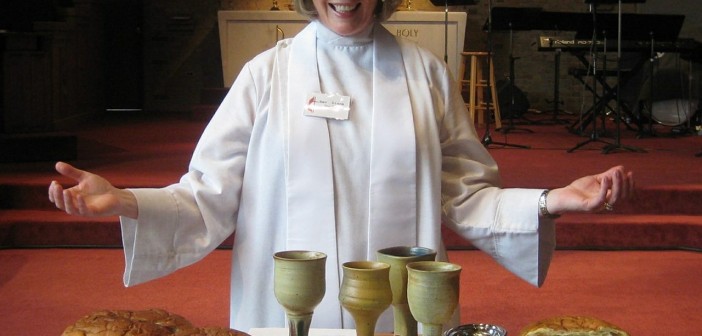When communion practices were changed, Pastor Jackie Hoy learned that time, flexibility, and education are key to a congregation accepting change.
I have always believed in the centrality of communion. For me, a common loaf and the chalice are important symbols. But one of the two churches I serve had resisted the practice of serving communion by intinction. They served communion with individual plastic cups and individual cut-up portions of bread. When I was appointed to this church, I hoped to shift the practice toward the common loaf, chalice, and intinction.
The common loaf was an easy change. People seemed to appreciate receiving a portion of bread torn from the loaf by the pastor’s hand. Using a chalice was a greater challenge and involved many conversations. Some would not receive communion by intinction because of health concerns.
We decided to offer a choice of methods. The compromise was accepted, though with a certain amount of trepidation. While we waited for the arrival of the chalice, I used the newsletter to get people thinking about the meaning of communion. I also worked through the logistics of how to serve bread by one method and “wine” by two. The Worship Committee and I rehearsed possibilities in the sanctuary until we found a pattern we thought would work.
We settled on a method where I would stand in the middle of the chancel step, where people would come first to receive the bread, then they would go to my right for intinction or to my left for individual cups. This pattern was explained in the newsletter prior to putting it into practice, and again in the worship service where it was first used. While some thought this would be a “big mess,” it turned out to be easy. People were patient with one another and willing to “make it work,” and the “merge” from two aisles in front of the chancel seemed to happen naturally.
In the months since the change, I have observed that there are those who always take an individual cup, and those who always choose intinction. There are others, who may have a preference, but if one side of the chancel is full, they will go to the other. Many people were glad for the change, and to my knowledge, no one was thoroughly opposed to it. People have helped to make it work, and communion Sunday now has the highest attendance of the month.
Listening to people’s concerns and informing people in advance of what would actually happen in worship were critical factors in bringing about this sensitive change. I have learned to allow time, to be flexible on some points, to do as much education as is necessary, and to allow the congregation time to “process” changes.
Related Resources
- How to Communicate Change Karen Shay-Kubiak
- Introducing a Congregation to Contemporary Worship Dianne Cochran
- Don’t Go It Alone When Changing Worship Rick Uhls






